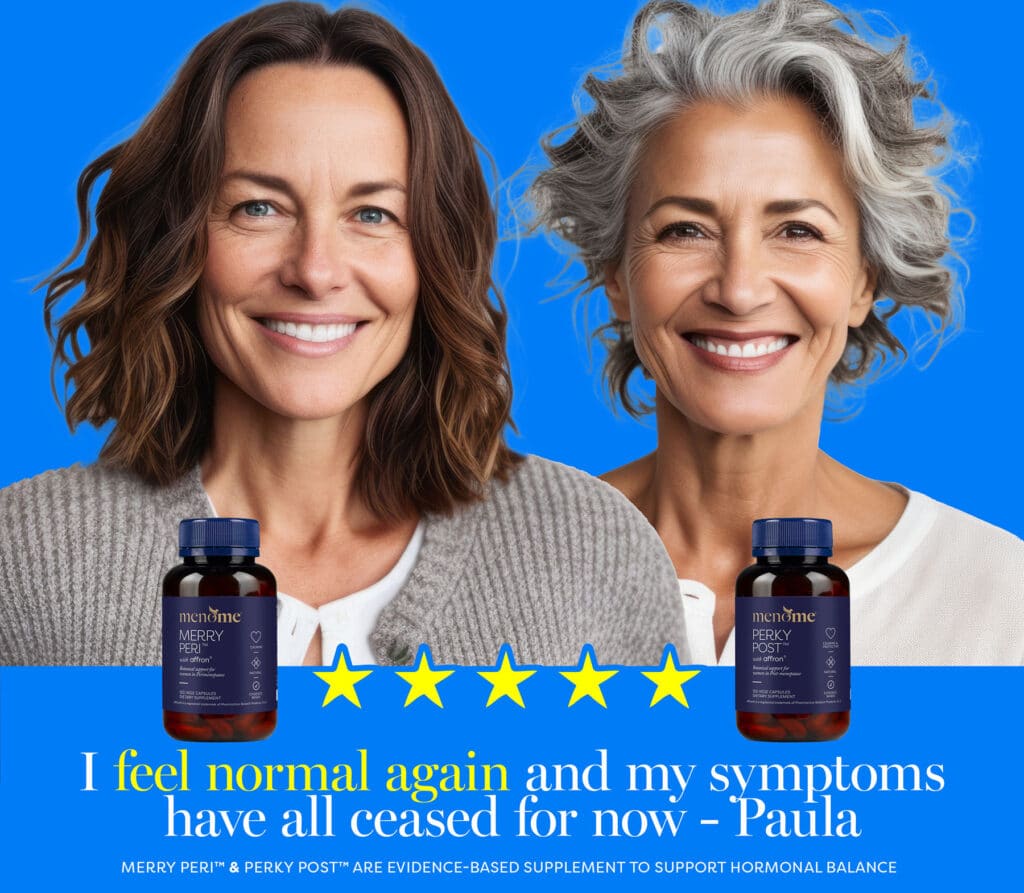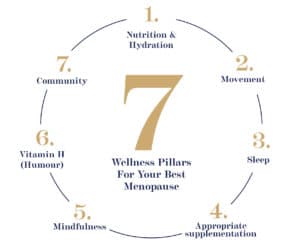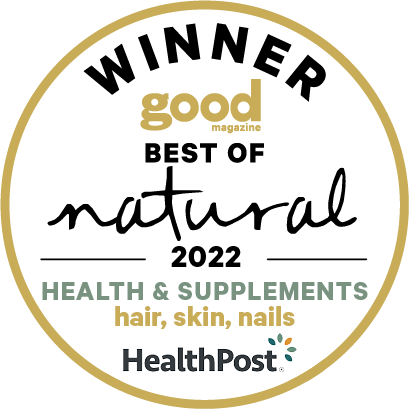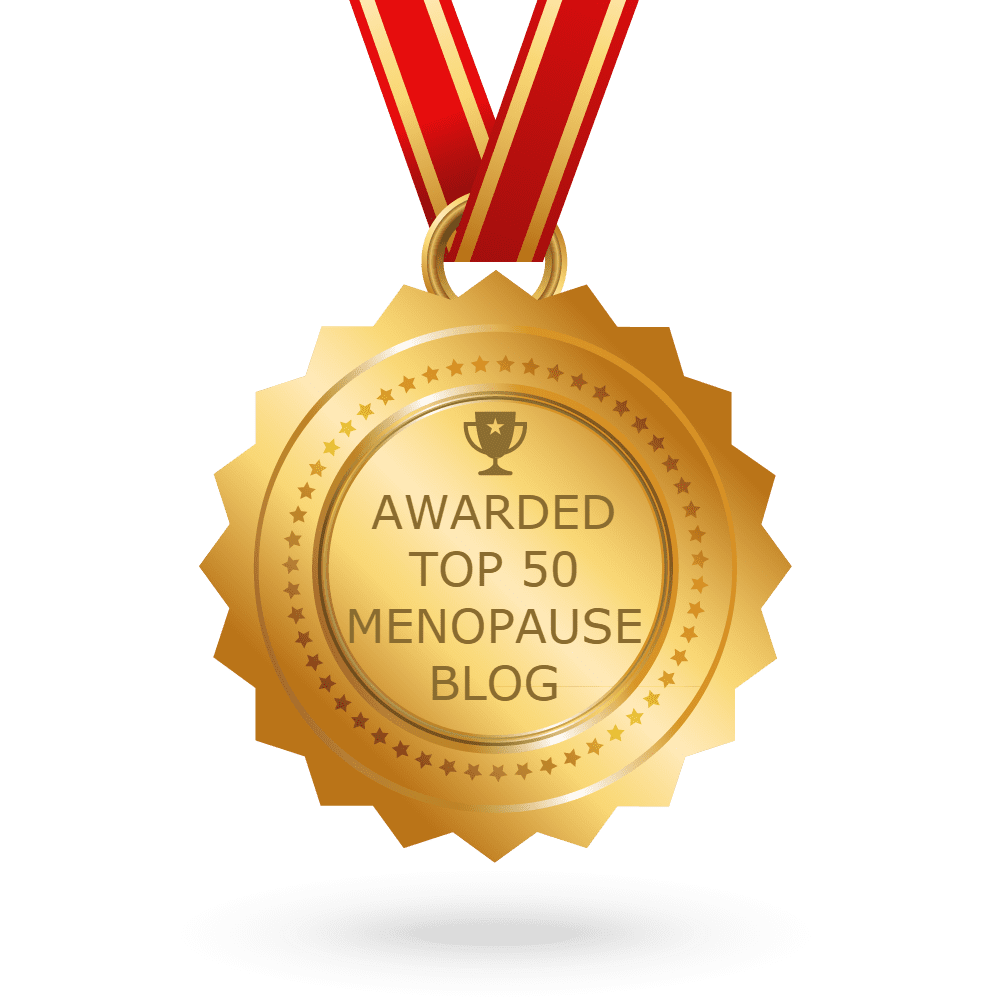Menopause.
Well actually, it’s not quite that simple! To be correct we need to call out premenopause, perimenopause, menopause and post-menopause.
It’s the end of your fertile years and every woman will go through it if she lives long enough.
In light of that, the subject has even entered the hallowed pages of Vogue in an article entitled:
“Once A Taboo Topic, Menopause Is (Finally) Having Its Wellness Moment
Vogue’s focus is on perimenopause which is when most symptoms occur and, until recently, many women didn’t know what to expect.
Although it’s projected that one billion women will be menopausal by 2025.
What is estrogen?
Perimenopause marks the beginning of menopause when your hormone levels change. Especially your sex hormones: estrogen, progesterone and testosterone.
In short, the first two are the major players.
However, it gets a little complicated because estrogen actually refers to a group of estrogens.
The most well studied are:
- Estrone (E1) – mainly stored in fat and muscle tissue. It’s a weaker estrogen commonly found in post-menopausal women.
- Estradiol (E2) – the strongest type of estrogen and generally the main player in women of childbearing age. Sometimes labelled ‘aggressive’ because it’s been linked to female disorders such as fibroids and other gynaecological conditions.
- Estriol (E3) – is the weakest estrogen – pregnancy is the only time we have a lot of it.
Estradiol is the estrogen that causes the most trouble at menopause – or, rather – perimenopause as it fluctuates through highs and lows.
Related: What Is Estrogen Dominance?
Estrogen & HRT
Currently, there’s a lot of publicity about HRT (hormone replacement therapy). Or MHT (menopause hormone therapy) as it’s been renamed in the 21st century.
Basically, HRT/MHT is a medically prescribed medicine and there are several different types.
Favour tends to side with bioidentical hormones these days. This means they’re similar to your natural hornones and are said to be safer with fewer side effects.
Estrogen (or estradiol) is usually given as a pill, transdermal patch, cream or gel.
And women who have a uterus also need to take progesterone to help protect against endometrial cancer. Experts suggest choosing bioidentical natural progesterone over another form of progesterone known as progestin. This is because progestin is associated with more side effects and risks.
Of course, it’s not our speciality so it’s best to speak with a medical professional who is up to date with the latest research for advice.
However, it’s important to realise that HRT/MHT is not for everyone.
Some women don’t do well on HRT and others can’t take it for medical reasons including cancer, stroke, vaginal bleeding or blood clot risk. Additionally, many women wish to go down a more natural route to manage their symptoms.
This is where we come in as we fly the flag of holistic, evidence-backed menopause management and education.
So, in the interests of HRT alternatives that tick the non-prescription box here are:
3 natural, non-prescription alternatives to HRT
1. Phytoestrogens as a non-prescription alternative to HRT
Phyto = plant Estrogens = estrogens
Midlife women tend to do better on a low-processed, anti-inflammatory, nutrient-dense diet. In fact, research continually points to the Mediterranean diet as a good choice.
Moreover, women who eat a diet abundant in fresh fruit and vegetables, as well as lean protein and healthy fats, have been found to experience fewer menopausal symptoms.

Avoiding processed foods, sugar, refined carbohydrates, caffeine and alcohol is also very helpful. These have been linked to sleep disruption, hot flushes, mood swings and weight gain.
And sugar and refined carbohydrates (which convert to sugar) cause blood sugar imbalances and insulin resistance, both of which encourage the body to store fat.
We use PPFF as a dietary guideline: phytoestrogens, protein, fat and fibre. You can read all about it here
This lifestyle includes increasing your intake of plant foods which are rich in naturally occurring estrogens known as phytoestrogens.
Phytoestrogens have weak estrogenic and anti-estrogenic effects, are similar in structure to our body’s natural estrogen and bind to the same receptors. What’s more, studies have shown they can play an important role in preventing menopausal symptoms, osteoporosis, cancer and heart disease. But the caveat here is in some women.
“In a perimenopausal or post-menopausal woman, when her own body’s estrogen is low, phytoestrogens may help ease the symptoms of low oestrogen in about one in three women. This is because about a third of the population has the specific gut bacteria that can metabolise the isoflavones (a type of phytoestrogen) in soy to a more potent phytoestrogen called equol. The amount of isoflavones needed daily to achieve therapeutic effects is contained in about 200g of tofu, or 100g of tempeh.” Jean Hailles
Phytoestrogen foods
- Apples
- Carrots
- Edamame beans (soybeans)
- Flaxseeds
- Lentils
- Mint
- Mung beans
- Oats
- Pomegranates
- Sesame seeds
- Soy milk
- Tofu
- Tempeh
- Wheatgerm
- Yams
Furthermore, this study showed phytoestrogens can reduce hot flushes if you’re still experiencing them. And this one showed phytoestrogens can help with bone loss making them protective against osteoporosis.
Get our free list of phytoestrogen foods here.
2. Merry Peri® and Perky Post® as a non-prescription alternative to HRT
At MenoMe®, everything we bring to the menopause table must be evidence-based.
Merry Peri® and Perky Post® contain affron (saffron), fenugreek and sage which have been shown to help with both body and mind symptoms.
In addition, they have a long history of use in fok medicine.
Perky Post® also contains resveratrol, vitamin D3 and K2 for cognition and bone strength. .
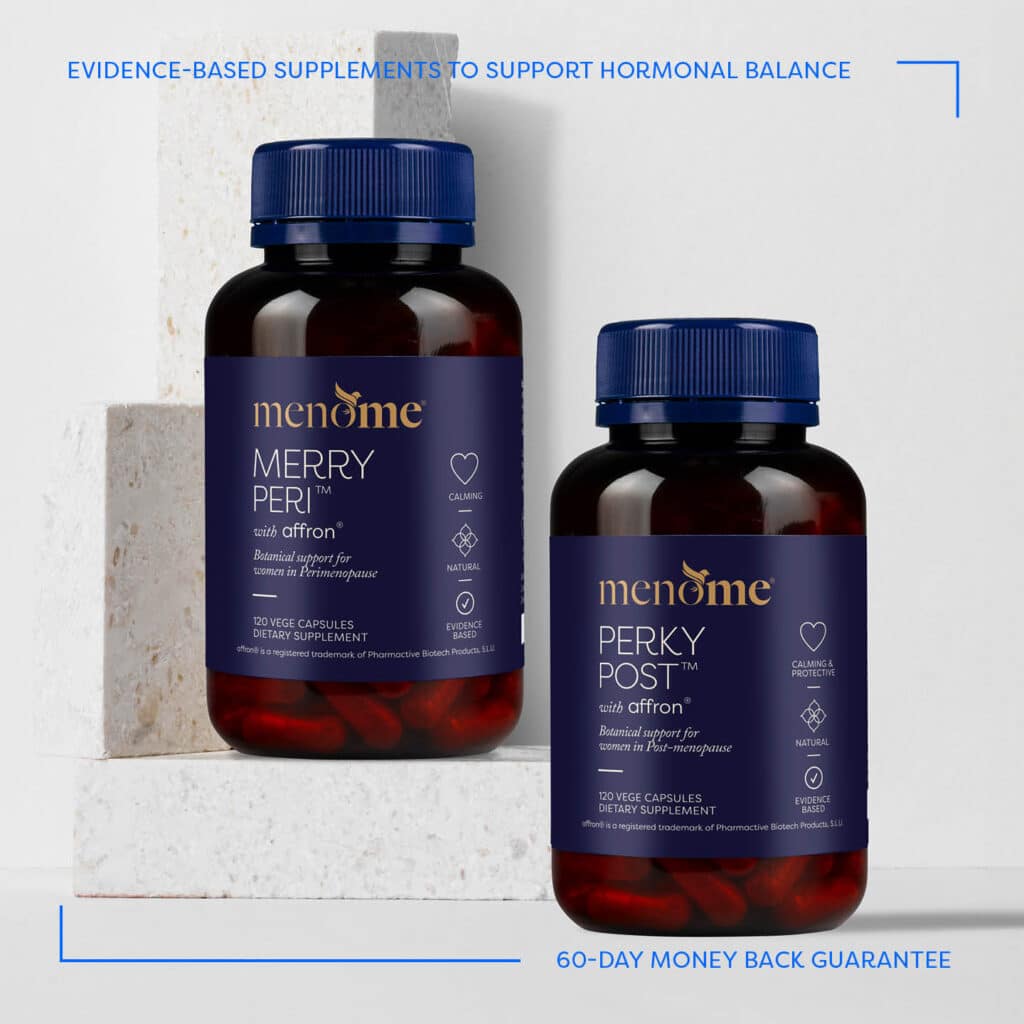
- hot flushes
- night sweats
- sleeplessness and sleep quality
- anxiety
- depression
- dizziness
- fatigue
- mood
- vaginal health
- libido
Listen: Menopause, Libido & Hormones All About Estrogen
3. Lifestyle factors as a non-prescription alternative to HRT
We often say it takes a multi-factorial approach to manage peri- and post-menopause naturally.
It’s why we delivered our 7 Wellness Pillars For Your Best Menopause because our approach is that the parts make up the whole.
So let’s talk about stress management, sleep and exercise. Naturally, they aren’t medical prescriptions but incorporating them into your life can go a long way to supporting your hormone levels.
Managing stress levels
Stress sets off the cortisol hormone which is produced by the adrenals.
And let’s face it, stress is pretty hard to get away from.
We live busy lives and are often juggling children, homes and careers.
But keeping as calm as possible is vital in menopause because the adrenal glands take up the slack from the ovaries as they reduce estrogen production.
What’s more, if you’re stressed, the adrenals will prioritise cortisol production and won’t be able to produce estrogen. As a result, menopausal symptoms become magnified.

Science has shown activities that help you relax include regular, moderate exercise, yoga, breathwork, mindfulness, meditation and sleep.
Given these points, the paradox is that if you set off cortisol it will disrupt sleep. And if you over-exercise it will trigger cortisol. So it’s all about balance.
If you don’t already have a regular exercise routine start slowly. Walk around the block a couple of times a week. Or do some online exercise at home. We’ve found Yoga With Adriene, or Walk At Home with Leslie Sansone have some good, moderate options.
Or try the breathwork exercise we’ve included here.
And please download our FREE Sleep Hygiene sheet here.
Conclusion
To sum up there are natural alternatives to HRT (MHT) that have proven effective in some women. It’s important to realise that there is no one size fits all. But through trial and error we can discover what works best for us.
All in all, evidence-based, non-prescription solutions have stood the test of time so they’re pretty good options to incorporate into your life.
